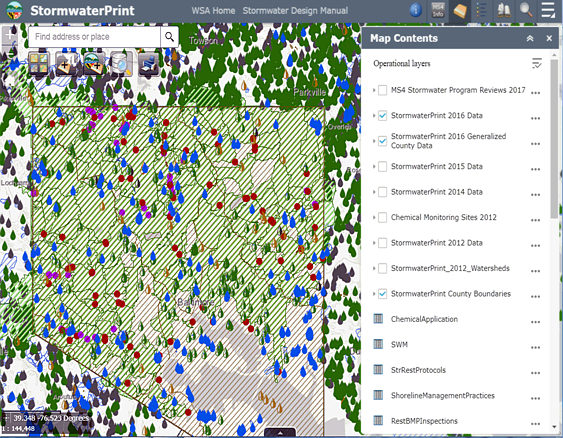StormwaterPrint is a Geographic Information System (GIS) application developed by the Maryland Department of the Environment (MDE) in support of the MD iMap initiative (One State-One Map). Maryland's municipal separate storm sewer system (MS4) permits require counties and municipalities to report data on local water quality as well as various stormwater management efforts (learn more about Maryland's MS4 permit program here). StormwaterPrint highlights efforts being undertaken by State, county, and municipal stormwater management programs to control urban water pollution by making this data available to the public. Planners, government authorities, and the public can explore and analyze this data to help with decision making and public outreach.
Some of the data collected (and available for viewing) include the following:
- Locations of various stormwater Best Management Practices (BMPs) throughout Maryland, as well as inspection information
- Locations of storm drain outfalls, monitoring sites, and select proposed future BMPs
- Information regarding various stormwater management programs and erosion and sediment control programs throughout the State
- Water quality data from chemical and biological monitoring sites where Maryland's MS4 counties have been performing monitoring for more than two decades
StormwaterPrint is an evolving effort. This interactive map depicts the locations and type of stormwater BMPs in Maryland as reported to MDE by local agencies. Drainage area to a practice, when available, is also included.
The data presented on the map is also available for download to you computer or device. For instructions on how to download data from the moa, please see the following guidance below:
The downloaded data is provided in the .csv file format. These files may be opened with spreadsheet apps such as Microsoft Excel.
Disclaimer: MDE makes no warranties of merchantability or fitness, express or implied, for the use of information obtained on StormwaterPrint. The user acknowledges and accepts all limitations, including the fact that all data, information, and maps are dynamic and in a constant state of maintenance, correction and/or update.
